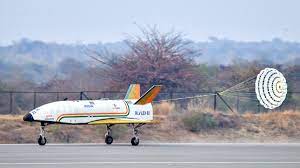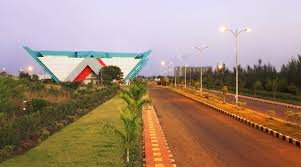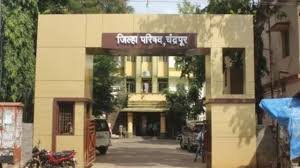
Another achievement of ISRO, Pushpak launched Pushpak is a reusable launch vehicle.
Indian Space Research Organization (ISRO) has successfully executed the landing mission of its first Reusable Launch Vehicle (RLV) named 'Pushpak'. The test was conducted at 7.10 am on Friday at the Aeronautical Test Range (ATR) at Challakere near Chitradurga, Karnataka. This is the second test of this series. ISRO Chairman S Somnath and other senior officials were also present at the launch site.
After this test, ISRO wrote on Twitter, ISRO has once again done wonders! Pushpak (RLV-TD), the winged vehicle, landed independently and accurately on the runway after being released from off-nominal position. Along with this, ISRO said that it has achieved a major achievement in the field of reusable launch vehicle technology through the 'RLV LEX-02' landing experiment.
Following last year's RLV-LEX-01 mission, RLV-LEX-02 demonstrated the autonomous landing capability of a reusable launch vehicle (RLV) after being launched from a helicopter, the space agency said in a statement. ΓÇ£The RLV is designed to perform more complex maneuvers with dispersion, correcting both ΓÇÿcross-rangeΓÇÖ and ΓÇÿdownrangeΓÇÖ and landing on the runway in a fully autonomous mode,ΓÇ¥ the statement said.
ISRO said that the Chinook helicopter of the Indian Air Force carried the winged vehicle named Pushpak and it was released from a height of 4.5 kilometers. He said that after being launched at a distance of four kilometers from the runway, 'Pushpak' autonomously made 'cross-range' correction and reached the runway. It successfully landed on the runway using its brake parachute, landing gear brakes and nose wheel steering system in a precise manner.
Features of Pushpak Vimana
-Pushpak is a reusable launching aircraft. It is a plane that looks like an airplane with wings.
-Its length is 6.5 meters and weight is 1.75 tonnes. This aircraft is equipped with robotic landing capability.
-The onboard navigation system is capable of landing at a high speed of 350 kilometers per hour to overcome the obstacles around the runway.
-This can prove to be effective in making access to space affordable. Its upper part is equipped with the most expensive equipment. It can be made reusable by bringing it back to earth.
-Being reusable, it will reduce debris in space. It will also help in refueling a satellite in space later or bringing it back for repair.
Indian Space Research Organization (ISRO) has successfully executed the landing mission of its first Reusable Launch Vehicle (RLV) named 'Pushpak'. The test was conducted at 7.10 am on Friday at the Aeronautical Test Range (ATR) at Challakere near Chitradurga, Karnataka. This is the second test of this series. ISRO Chairman S Somnath and other senior officials were also present at the launch site.
After this test, ISRO wrote on Twitter, ISRO has once again done wonders! Pushpak (RLV-TD), the winged vehicle, landed independently and accurately on the runway after being released from off-nominal position. Along with this, ISRO said that it has achieved a major achievement in the field of reusable launch vehicle technology through the 'RLV LEX-02' landing experiment.
Following last year's RLV-LEX-01 mission, RLV-LEX-02 demonstrated the autonomous landing capability of a reusable launch vehicle (RLV) after being launched from a helicopter, the space agency said in a statement. ΓÇ£The RLV is designed to perform more complex maneuvers with dispersion, correcting both ΓÇÿcross-rangeΓÇÖ and ΓÇÿdownrangeΓÇÖ and landing on the runway in a fully autonomous mode,ΓÇ¥ the statement said.
ISRO said that the Chinook helicopter of the Indian Air Force carried the winged vehicle named Pushpak and it was released from a height of 4.5 kilometers. He said that after being launched at a distance of four kilometers from the runway, 'Pushpak' autonomously made 'cross-range' correction and reached the runway. It successfully landed on the runway using its brake parachute, landing gear brakes and nose wheel steering system in a precise manner.
Features of Pushpak Vimana
-Pushpak is a reusable launching aircraft. It is a plane that looks like an airplane with wings.
-Its length is 6.5 meters and weight is 1.75 tonnes. This aircraft is equipped with robotic landing capability.
-The onboard navigation system is capable of landing at a high speed of 350 kilometers per hour to overcome the obstacles around the runway.
-This can prove to be effective in making access to space affordable. Its upper part is equipped with the most expensive equipment. It can be made reusable by bringing it back to earth.
-Being reusable, it will reduce debris in space. It will also help in refueling a satellite in space later or bringing it back for repair.
After this test, ISRO wrote on Twitter, ISRO has once again done wonders! Pushpak (RLV-TD), the winged vehicle, landed independently and accurately on the runway after being released from off-nominal position. Along with this, ISRO said that it has achieved a major achievement in the field of reusable launch vehicle technology through the 'RLV LEX-02' landing experiment.
Following last year's RLV-LEX-01 mission, RLV-LEX-02 demonstrated the autonomous landing capability of a reusable launch vehicle (RLV) after being launched from a helicopter, the space agency said in a statement. ΓÇ£The RLV is designed to perform more complex maneuvers with dispersion, correcting both ΓÇÿcross-rangeΓÇÖ and ΓÇÿdownrangeΓÇÖ and landing on the runway in a fully autonomous mode,ΓÇ¥ the statement said.
ISRO said that the Chinook helicopter of the Indian Air Force carried the winged vehicle named Pushpak and it was released from a height of 4.5 kilometers. He said that after being launched at a distance of four kilometers from the runway, 'Pushpak' autonomously made 'cross-range' correction and reached the runway. It successfully landed on the runway using its brake parachute, landing gear brakes and nose wheel steering system in a precise manner.
Features of Pushpak Vimana
-Pushpak is a reusable launching aircraft. It is a plane that looks like an airplane with wings.
-Its length is 6.5 meters and weight is 1.75 tonnes. This aircraft is equipped with robotic landing capability.
-The onboard navigation system is capable of landing at a high speed of 350 kilometers per hour to overcome the obstacles around the runway.
-This can prove to be effective in making access to space affordable. Its upper part is equipped with the most expensive equipment. It can be made reusable by bringing it back to earth.
-Being reusable, it will reduce debris in space. It will also help in refueling a satellite in space later or bringing it back for repair.

.jpg)
















